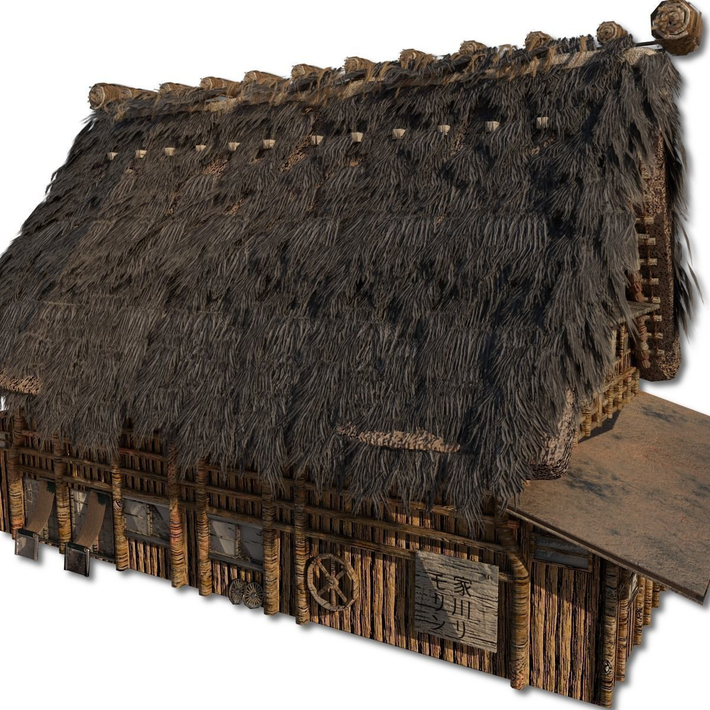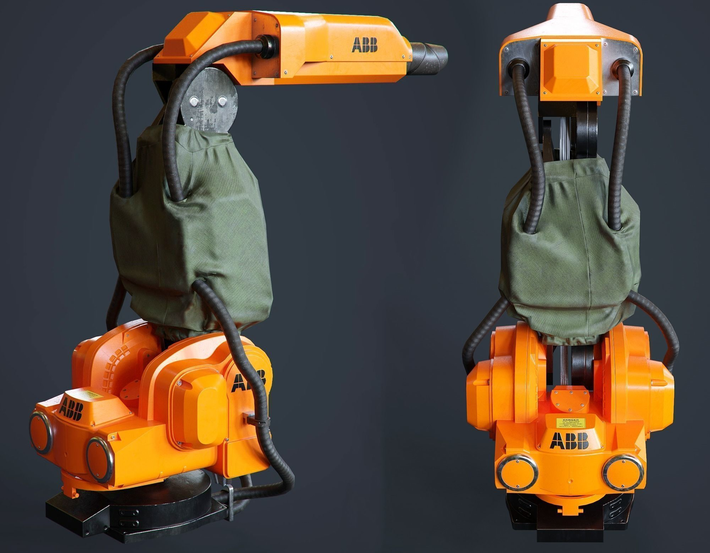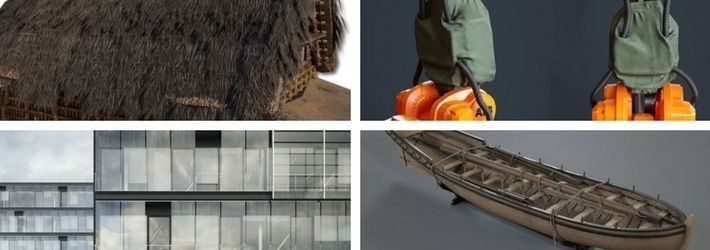With more and more designers diving into Physically Based Rendering (PBR) workflows, we asked the winners of last year’s PBR challenges to share some tips and insights about working with PBR.
Tell us a bit about yourselves. How did you get into 3D modeling and PBR?
pes: My name is Peter Solodov. I’ve been modelling for quite a long time. My first attempts were in late 80s – early 90s. I had the classic 128k Mac, a really slow machine, which had this app called Swivel 3D. I have a little article about it in my blog (its in Russian, but at least you can see the pics). These were just some small experiments, during which I tried many 3D apps. Can’t even remember them all. I finally got to use Cinema4D, version 6 or 7, maybe. It’s still my main modelling software. In mid 2000s I started to occasionally work as 3D freelancer.
In 2009, a friend of mine suggested to take a part in game development. That was the first time I got into real-time modeling. The game did not come to life, but I got some experience. Around that time I started working in 3D modelling as a main job.
I don't really remember when I started working with a PBR workflow. I think it was mainly when Substance Painter came out.
theojang: I am a 3D modeler/texturer specialized in weaponry. I work mainly on imaginary swords and guns, but I also have some skills in making photorealistic models based on real-world objects.
I jumped into this market in late 2016 to develop my career as a 3D designer and to gain experience for my further game development plans. I specifically target game developers to promote my products. I use PBR as my primary workflow to support modern game engines of the two major platforms: Unreal Engine 4 and Unity 5, both use PBR as their real-time renderer.

Shirakawago Village House by theojang
franmarz: I have always employed PBR techniques. I've been using the combo of 3ds Max and V-Ray since the day I started studying architecture, 14 years ago. Third-party renderers like V-Ray or Maxwell were conceived since the beginning as physically correct alternatives to the standard renderers of the old school 3D modeling and animation suites.
I think the PBR revolution we are enjoying nowadays is a result of the unavoidable standardization of shading techniques across the different rendering solutions out there. The evolution of the still very limited real-time rendering engines also deserves a mention, as they have become smart enough to manage the different texture channels, which simulate the interaction of materials and light in a similar way to classical path-tracing unbiased-capable renderers.
Since I finished studying, I worked in a number of architectural visualization projects for architecture firms and individuals, and I always tried to achieve a certain degree of photorealism in my rendering works. I never felt comfortable though: the working conditions were bad and I wasn't fairly paid for most of these jobs, so, around two years ago, I decided to work on my strengths and my own goals, focusing almost exclusively on creating 3D models for sale. Now I follow my own quality standards as I continue expanding my knowledge around proper modeling of any object, either lowpoly (optimization) or highpoly (topology), and creating high quality but optimized materials and textures, while looking for the optimal usability and compatibility for all my scenes and models.
kenprol: My name is Iskander Gallyamov, also known as “kenprol”. Currently residing in Russia, Saint Petersburg. I am a 3D artist and have been working in this field since 2010.
What major challenges did you face when going into PBR workflows?
pes: For me, human skin is the most challenging, I think. I’m constantly unhappy about how it turns out. Especially when I look at my older models. As I am making it, it looks fine, but after a while I look at it again and want to start over. Is it because of the texture or the lighting environment? I don’t know.

Pinnace Longboat by pes
theojang: In PBR, I personally find it quite difficult to reproduce realistic plastic and glass materials compared to creating metal materials. PBR workflow is based on Roughness and Metallic values. Roughness value absorbs light, and Metallic value reflects light. A grand majority of plastic and glass materials are shiny, but they are not necessarily metallic.
franmarz: Although this is not exclusive of PBR workflows, understanding the appropriate structure of a material in order to obtain a proper mixture between detail and performance is tough, considering that it will be applied to a model, which will be used under a wide variety of circumstances. More specific to PBR, I think obtaining a good glossiness/roughness level, using either a map or a numeric value is the most challenging right now.
kenprol: Using PBR reference charts for realistic texture settings is a challenge.
What workflows do you use?
pes: I use the metallic/roughness workflow, as I mentally understand what’s going on in the texture maps, I can predict how it should look by looking at the textures. It’s much easier for me.
What I don't really get is the spec/gloss workflow. It’s not that straight forward. I just don't get it. It’s confusing to me.
theojang: I usually make and unwrap my models in Blender. When a model is ready to be textured, I export it to Substance Painter, which allows users to create and apply textures for any workflow very quickly. Contrary to traditional texturing via image editing software, such as Photoshop and GIMP, Substance Painter generates real-time and non-real-time textures all at once. This allows me to generate high-quality presentation images from Diffuse + Reflection + Glossiness + Ior + Normal (non-PBR) textures using the 3ds Max Vray renderer. On the other hand, I deliver game-ready PBR models to customers with these texture maps: BaseColor + Metallic + Roughness + Normal + AmbientOcclusion textures for Unreal Engine 4, and Albedo + Metallic + Normal textures for Unity 5.
franmarz: As I said, I learned the PBR basics using V-Ray materials in 3ds Max, so I'm a reflection-glossiness native, but the PBR basics are the same for the metallic-roughness workflow, hence I use both. I go step by step, figuring out the albedo of a surface, its patterns (maybe multi-layering is required); its base reflectivity, index of refraction, relief and roughness/glossiness, these by testing with a common scene setup (a dome light with a calibrated HDRi applied, a camera with a proper exposure configuration, and an object complex enough to review the reflectivity, Fresnel, bump effects).

Office building - Innovation Center by franmarz
kenprol: I use blender for modeling/UV unwrapping, Marmoset Toolbag for baking textures (ID, AO, Normal map etc.) and Substance Painter for texturing
Do you use indices of refraction for your materials? If so, where do you find them?
pes: That is all just trial and error. I know that some materials are more glossy, some more rough. I look at real world examples and try to compare them in gray scale value. I don't use exact numbers.
theojang: Rather than using a single value, for instance Iron Material: Roughness value = 0.2, and Metallic value = 0.8, I reference Substance Painter's Material library, or Poliigon.com (premium photo-scanned textures). They both provide high quality PBR textures.
franmarz: I used to visit the refractiveindex.info website, especially for metallic surfaces. But being so accurate is not really necessary, because the actual objects we try to emulate are never so perfect. Using an approximate base reflection and a quadratic falloff curve works pretty well for almost any material type. Figuring out the appropriate albedo for every material is much more complicated than finding its index of refraction. The weight of the albedo in the final result is way bigger, so establishing either the wrong tone or the wrong saturation for it usually leads to a mess that is hardly ever easily fixable afterwards.
kenprol: It is not the most important parameter for PBR materials in the gaming industry, but you can always find the index of refraction (IOR) on the internet or in books.

Paint Robot by kenprol
What was your most challenging PBR work to date?
pes: I have a big project which I started back in 2012 and have been working really slowly on it, sometimes I have a year-long gap. Can’t even imagine when I will finish it. The project is a 1750s French ship LeRequin. It is a really complex model with lots of textures and a huge amount of detail.
You can see the latest renders here: http://pes.ru/2017/07/chebec-guns/
theojang: I have a digital camera model in my library, the model included both glass and plastic materials, and we could definitively say that the texturing was not a great success :-(
franmarz: My model "Office building - Technology Park headquarters" was the first work I made with full implementation of the reflection-glossiness PBR workflow I normally use, and it was indeed challenging. But the most complicated model I've ever made probably was a double-deck train coach, which I developed for a customer of CGTrader through the 3D Jobs section, with almost 300 textures applied to a bunch of metallic-roughness materials.

Double-deck train coach by franmarz
Do you have any PBR tutorials? If you don't, would you be willing to make a PBR tutorial?
pes: Actually I’m too lazy to make the tutorials. And there are tons of great ones already.
theojang: With an experience of only one year and few months, I am still a beginner in this field :) But I am looking forward to share my knowledge in the future!
franmarz: No, I have not. And I don't plan to make any at the moment, because there are a lot of good documentation around already, e.g., I recommend "The Comprehensive PBR Guide" by Allegorithmic, a free disposal couple of PDFs written by Wes McDermott. And I've learned almost everything relating PBR and polygonal modeling thanks to the works of Adán Martín, a Spanish photographer and CGI creator. He has really good tutorials on YouTube.
kenprol: Yes, I have a channel on Youtube, but it is in Russian. https://www.youtube.com/user/kenproll
If there is a high demand for my lessons, I can organize a course in English.
We want to thank pes, theojang, franmarz, and kenprol for sharing their experience with PBR! You can find PBR models on CGTrader, by using the PBR filter in the search.




Comments